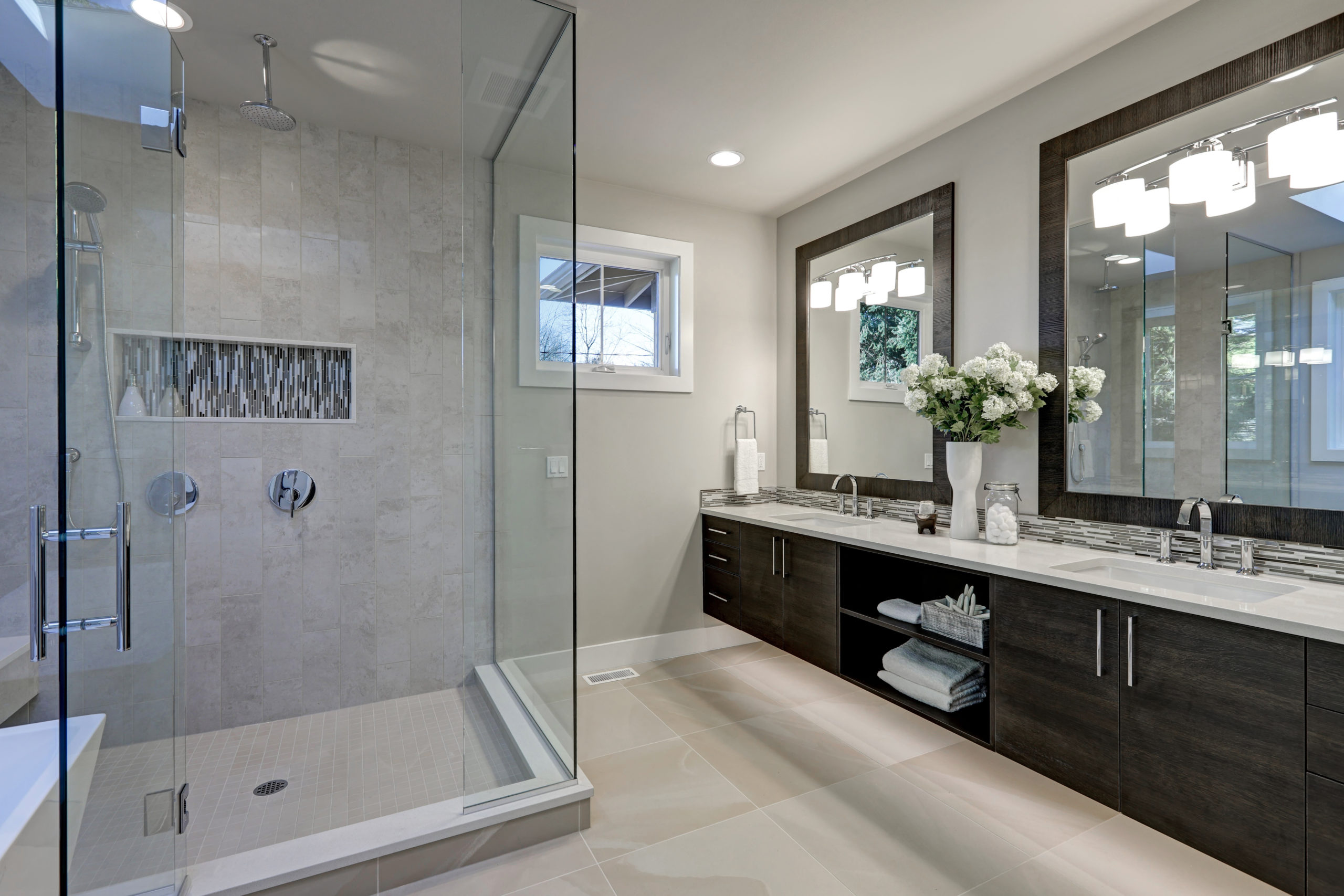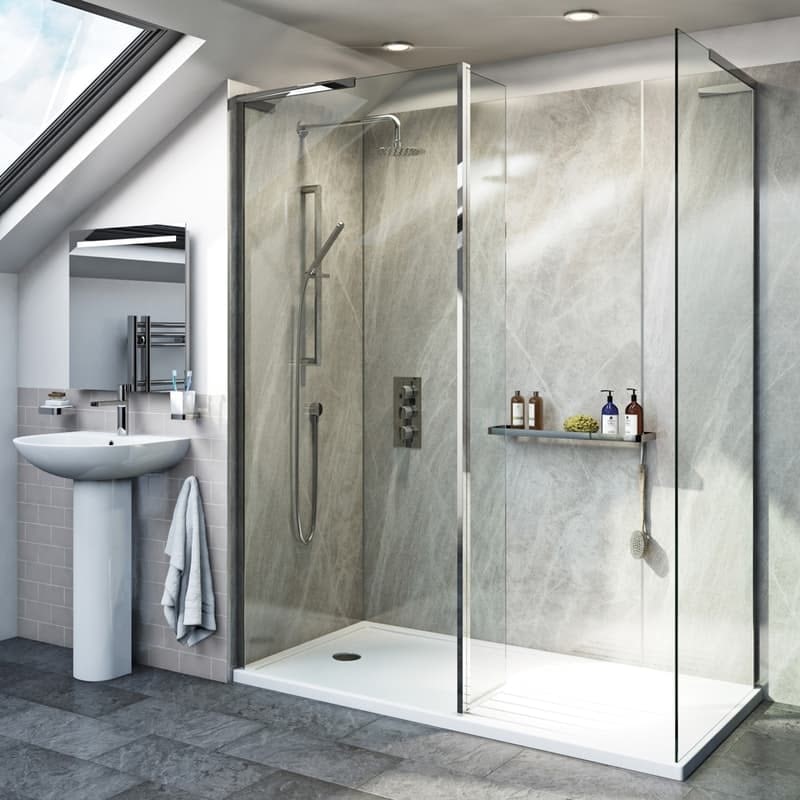Step-By-Step Guide - Mastering Your New Shower Unit Installation
Step-By-Step Guide - Mastering Your New Shower Unit Installation
Blog Article
We've found this article involving How to Build a Shower Enclosure for Your DIY Bathroom directly below on the net and concluded it made good sense to share it with you on this site.

A successful shower installation requires cautious preparation and also a great deal of job. In most cases, you will certainly require to do 3 sorts of jobs: mounting wall surfaces, mounting the plumbing, and also ending up wall surfaces.
Various Sorts Of Shower Units
A Lot Of Typical Blunders
Preparation.
Firstly, you must pick the sort of shower that you desire to set up. It is important to ascertain whether the chosen shower is capable of coping with particular systems as well as can regulate a safe degree of water with the central heating boiler. The majority of shower systems nowadays are developed to be flexible to various water pressures (such as saved warm water as well as cool keys).
It is also important to think about the water pressure and also the preparation of the piping and drainage for the shower.
Technique.
Relying on the kind of shower you desire to set up, the shower head must either be suited order to avoid its contact with the water in the bathroom listed below or the base tray, or it must have a check shutoff.
Before beginning, it is recommended to note the settings of the shower head and control, as well as to intend the pipe-work involved. Furthermore, the water drainage system to remove the waste water will certainly require to be planned. Both settings of the cord course and the shower button will certainly also require to be considered if a rapid or electric shower device is being installed.
Utilize the guideline guide given with the shower unit to fit the shower control.Before suitable the pipes that will supply the water to the shower system, it is necessary to cut off the water. In order to protect the pipes, they need to be given a water-proof covering as well as also fitted with isolating valves. The pipelines can then be hidden into the wall surface and also plastered over to neaten the overall appearance.
Fit the base tray, shower head, and also fittings.
Link the major shower control to the pipes that will be providing the water (This may need a women screw string adapter).
Reconnect the water supply as well as examination the pipelines for any kind of leakages, as some might require firm.
If you are mounting an electric shower, keep in mind to switch off the electrical power supply before making any kind of electric links. As soon as these links have actually been made (there need to be guidance within the instruction manual), the power supply can be changed back on.
Changing Water Stress to Match Your Shower.
The cold water reservoir can be lifted to a higher elevation (occasionally as little as 150mm (6inches)) by fitting a strong wood assistance under it - potentially made up of struts and also blockboards. If you pick this alternative, the main and distribution pipes will certainly also have to be raised to satisfy the new height of the tank.
Conversely, a booster pump (a solitary pump or a dual/twin pump) can be fitted. Whichever kind is selected, it needs to be attached right into the power supply in order to run.
Piping and also Water drainage.
It is best to use 15mm diameter supply pipelines, as well as make the go to the shower as brief as well as straight as feasible so as to preserve maximum stress as well as reduce warm loss. Furthermore, by minimising using elbow joints for pipe corners, you can decrease the resistance in the flow of the water supply. You can achieve this by flexing the pipelines rather.
Most Popular Shower Enclosure Options to Upgrade Your Bathroom
Frameless Shower Enclosures
Switching to a frameless shower enclosure can instantly add a modern feel to your bathroom. This type of shower enclosure eliminates the visual obstruction of frames, providing a seamless flow using fully customisable glass.
Since they are fully customisable, it fits all sizes and shapes of your bathroom space. You can also design it in a way suitable for an expansive spa shower.
In-line Shower Options
Another popular shower enclosure option you can use to upgrade your bathroom is an in-line shower. This type of shower installs a shower glass in-line with an adjacent wall, keeping water within the shower area.
You can have two options for in-line showers: hinged doors and sliding doors. An in-line shower with hinged doors allows you to have one glass shower door mounted on one side and open the door outwards. Meanwhile, in-line showers with sliding doors will enable you to save space but are more expensive.
Semi-Frameless Shower Enclosures
The semi-frameless shower enclosure is also an excellent shower enclosure option as it reduces the possibility of mould. Since the glass door is frameless, there’s no way soap and water will be stuck on it. But to ensure that there’s no way for mould to flourish in your bathroom, choose frameless shower enclosures instead.
Semi-frameless shower enclosures are the ideal choice if you adore the design of frameless showers but would prefer a more affordable solution. These types of shower enclosures have a range of options available by the glass manufacturing process in accordance with various height specifications.
You can also customise this type of shower enclosure. However, your options might be limited because of the standard sizes and heights.
Glass Block Shower Enclosure
If you don’t want a bathroom door and walk-in glass shower enclosures are not an option either, a glass block shower enclosure is for you. Glass blocks will allow your bathroom to access maximum daylight while having the privacy it offers. Also, glass block enclosures might require a bit more effort to clean than other enclosures, but they are durable and versatile options.
You can also be creative when using glass blocks for your bathroom. Since this type of shower enclosure is made of small glass blocks, you can easily create a unique shower enclosure shape. There are many options for thickness, styles, and colours, too.
Final Thoughts
Upgrading your bathroom with a new shower enclosure is a great way to add value to your home. Not only will it appear nice, but it will also be more functional and efficient. When choosing a shower enclosure, pick one that fits the style of your bathroom and your budget. It’s also paramount to take note of the pros and cons of each type before installation to ensure you don’t miss anything important.
https://gharpedia.com/blog/shower-enclosure-to-upgrade-bathroom/

I came across that blog post on How to Install a Direct-to-Stud Shower Enclosure when doing a lookup on the internet. Do you know another person who is truly interested in the niche? Do not hesitate to share it. Thank you so much for your time spent reading it.
View More
Report this page